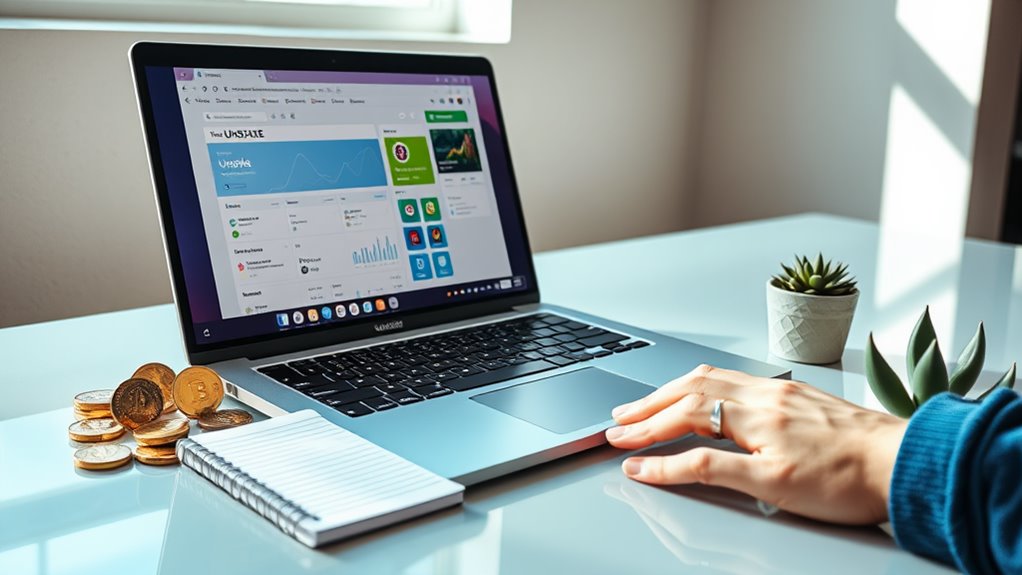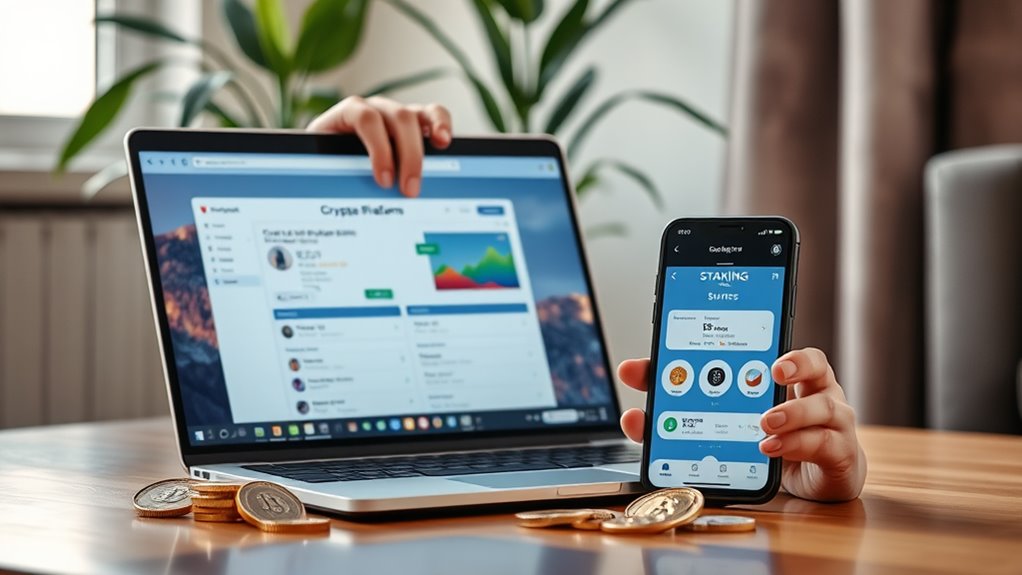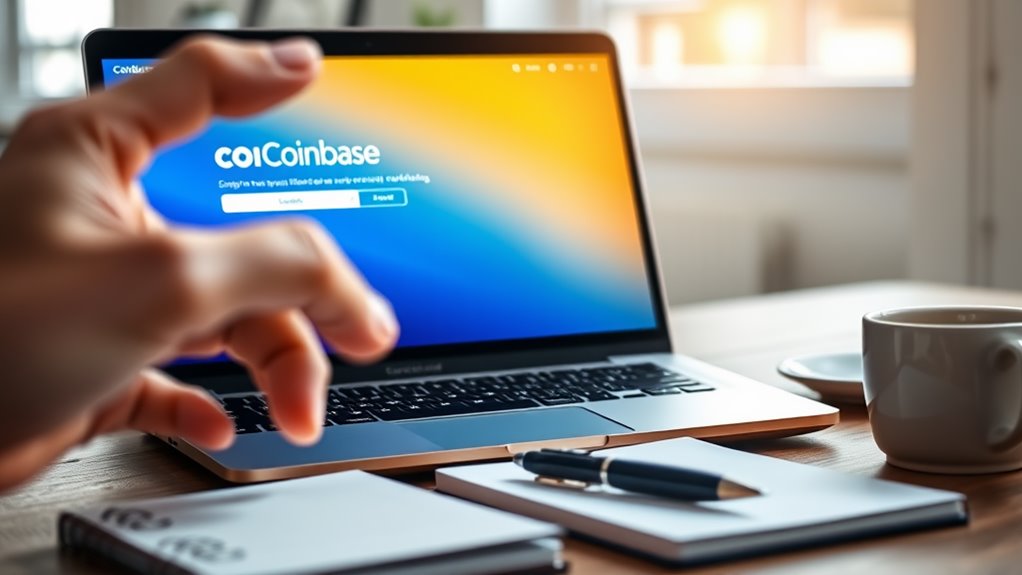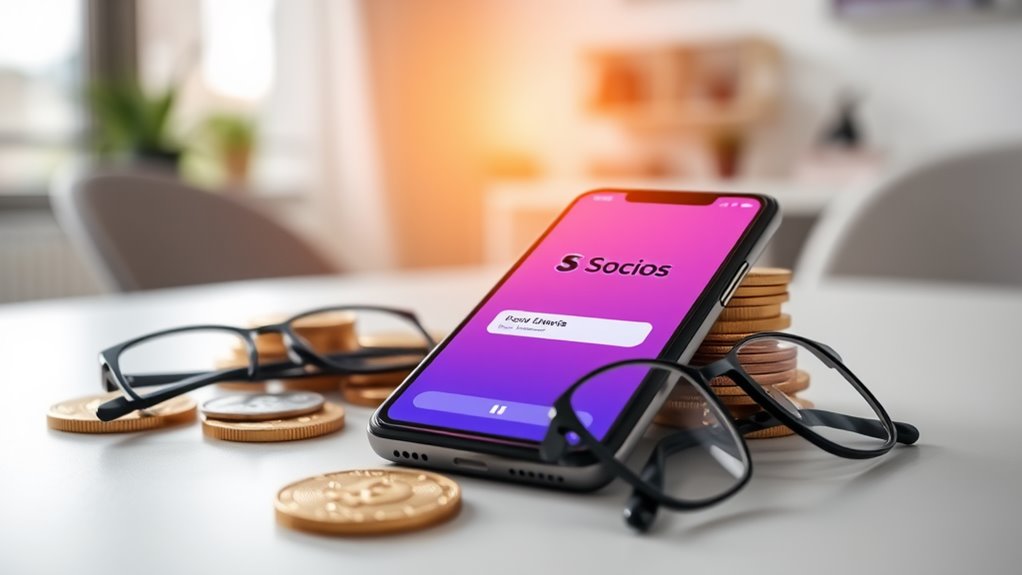
How to Unstake Crypto: A Step-by-Step Guide
Unstaking crypto involves releasing assets that were previously locked in a blockchain network, allowing users to access their funds. To unstake, users typically log into their platform, select the asset, and specify the amount to unstake. Each platform may have distinct processes, including lockup or unbonding periods. Factors such as market volatility and provider risks play a role in successful unstaking. Understanding these elements is essential for managing investments effectively and can help optimize financial decisions. More information can provide valuable insights.
Key Takeaways
- Log into your cryptocurrency platform account and navigate to the section for staking or earning rewards to begin the unstaking process.
- Select the specific cryptocurrency or asset you wish to unstake and specify the amount to be released.
- Be aware of any lockup or unbonding periods that may apply to your selected asset before finalizing the unstaking request.
- Complete any required identity verification and two-factor authentication to secure the transaction.
- Monitor the status of your unstaking request until assets are available for trading or withdrawal, and stay informed about market conditions.
Understanding Staking and Unstaking

Staking and unstaking are essential concepts in the world of cryptocurrency that play a significant role in the operation of various blockchain networks.
Staking involves locking up cryptocurrencies to support a network while earning rewards for validating transactions. This process often employs the Proof-of-Stake (PoS) mechanism, where validators are randomly selected based on their staked amounts.
Participants can choose different types of staking, such as solo or pooled, to align with their investment strategies. Users must set up specialized wallets to lock their assets and meet minimum stake requirements, like Ethereum’s 32 ETH for validators. Additionally, staking is known for its ability to generate consistent passive income, contributing to the appeal of participating in blockchain networks.
Importance of Unstaking

Unstaking is important for several reasons, primarily because it allows users to access liquid assets when needed. By freeing up staked funds, individuals can avoid penalties associated with prolonged commitments and have greater flexibility in transferring their assets. This ability to manage one’s investments effectively can also enhance opportunities for better financial outcomes. Additionally, unstaking can help users adapt to changing market conditions and seize better investment opportunities that may arise.
Accessing Liquid Assets
Accessing liquid assets is essential for users seeking flexibility in their financial activities. Unstaking allows individuals to release their staked assets, enabling various financial opportunities.
The importance of accessing liquid assets includes:
- Financial Options: Users can engage in trading or lending within DeFi platforms.
- Risk Management: Unstaking diversifies investment strategies, reducing risk exposure.
- Economic Flexibility: Liquid assets allow users to adapt their strategies in response to market fluctuations.
- Strategic Reallocation: Individuals can reposition their assets to capitalize on changing market conditions.
Additionally, liquid staking enhances capital efficiency, allowing users to utilize their staked assets in various DeFi applications.
Avoiding Penalties
The importance of avoiding penalties in the world of cryptocurrency cannot be overstated, as it directly affects the financial security of validators and their stakers.
Validators face slashing penalties for actions like double-signing blocks or failing to maintain a stable internet connection. These penalties can lead to reduced stakes, temporary or permanent bans, and significant financial losses.
To mitigate risks, validators should regularly update their software, guarantee a reliable internet connection, and stay informed about network conditions and protocol changes.
Stakers, in turn, should choose reputable validators to protect their assets. While the probability of slashing incidents may be low, the unpredictable nature of penalties underscores the importance of compliance and diligence in the staking process. Additionally, understanding the risks of staking is crucial for making informed decisions in the staking process.
Flexibility in Transfers
Flexibility in managing cryptocurrency assets plays a significant role in the investment landscape. Unstaking provides investors with the ability to make quick decisions and adapt to changing circumstances.
This flexibility is essential for optimizing investment strategies and responding to market dynamics effectively. Key benefits of unstaking include:
- Market Adaptation: Allows rapid responses to market changes, enabling timely investment decisions.
- Financial Control: Grants full control over funds, facilitating immediate relocation as needed.
- Investment Diversification: Supports spreading investments across various networks, reducing reliance on a single blockchain.
- Liquidity Access: Guarantees assets are readily available for emergencies or new investment opportunities. Additionally, by unstaking, investors can better position themselves to take advantage of innovations in crypto staking that may arise in the evolving DeFi landscape.
Platforms for Staking and Unstaking

Staking and unstaking crypto can be efficiently managed through various platforms designed to meet different user needs.
Centralized platforms, such as Binance and Coinbase, simplify the process by handling technical complexities, but they require users to trust them with asset custody.
Centralized platforms like Binance and Coinbase ease staking by managing complexities, but trust in asset custody is essential.
In contrast, decentralized protocols like Aave and Lido offer higher rewards, albeit with increased technical knowledge required.
Liquid staking platforms, including Keynode and Crypto.com, provide users with the ability to access liquidity while earning staking rewards.
Additionally, specialized platforms like Rocket Pool focus on Ethereum node staking.
Each platform has distinct advantages, such as competitive yields or robust security measures, allowing users to choose based on their preferences and risk tolerance. Notably, crypto lending platforms like Nexo and YouHodler can also complement staking strategies by providing access to liquidity without the need to sell assets.
Steps to Unstake on Kraken

To unstake crypto on Kraken, users must first log into their Kraken account, ensuring they have full access.
Next, they should navigate to the specific asset they wish to unstake, selecting it from the appropriate section.
Finally, confirming the unstake process completes the action, allowing for further management of the funds.
Logging Into Kraken Account
Logging into a Kraken account is the essential first step for users looking to unstake their cryptocurrencies.
To begin this process, users should follow these steps:
- Access Site: Navigate to the official Kraken website or the Kraken Pro platform.
- Login Credentials: Enter the registered email or username along with the password associated with the account.
- Security Tips: It is advisable to use the option to remember login credentials only on devices that are trusted to maintain security.
- Password Recovery: If login credentials are forgotten, users can utilize the password recovery options provided by Kraken.
Selecting Asset to Unstake
| Asset Type | Staked Balance | Unstake Option |
|---|---|---|
| Ethereum | 1.5 ETH | Unstake |
| Bitcoin | 0.2 BTC | Unstake |
| Polkadot | 10 DOT | Unstake |
Users must also guarantee they understand any lockup periods before proceeding.
Confirming Unstake Process
Initiating the unstaking process on Kraken requires users to navigate to the “Earn” section of the platform.
After selecting the asset to unstake, users can follow these steps to confirm the process:
- Click on the three dots next to the staked asset and select “Unstake.”
- Enter the specific amount to unstake; users can also choose predefined percentages.
- Consider the stake type; flexible term staking allows immediate unstaking, while bonded term staking includes a lockup period.
- Confirm the request; once completed, the status will change from “Initiated” to “Success.”
After confirmation, the assets will appear in the portfolio with a “Pending” status until they are available for trading or withdrawal.
Steps to Unstake on Coinbase

When users decide to unstake their cryptocurrency on Coinbase, they must follow a series of straightforward steps to guarantee a smooth process.
First, they need to log into their Coinbase account and navigate to their portfolio. Users should select the specific asset they wish to unstake, such as Ethereum, and click the “Unstake” option.
Next, they enter the amount they want to unstake. After initiating the unstaking process, assets enter an unbonding period, which varies by asset. During this time, users may be required to complete identity verification and two-factor authentication for security.
Finally, they should review the transaction details and confirm the unstake to complete the process.
Steps to Unstake Fan Tokens on Socios

Unstaking Fan Tokens on the Socios app is a straightforward process that users can initiate at any time.
To successfully unstake, users should follow these steps:
To successfully unstake, follow the outlined steps in the Socios app for a seamless experience.
- Navigate to the My Fan Tokens section in the Socios app.
- Select the Fan Token intended for unstaking and scroll to the ‘Staked’ section.
- Tap ‘Click to Unstake’ and specify the number of tokens to unstake.
- Review the transaction details, confirm the action, and complete the process, possibly entering a passkey.
Once unstaked, a 7-day cooldown period begins, during which tokens will not earn Reward Points.
After this period, users can freely restake or utilize their tokens, receiving a notification when they are available for claiming.
General Considerations When Unstaking

Understanding the general considerations involved in unstaking cryptocurrency is important for users who have previously engaged in staking activities. Each blockchain protocol has distinct rules that may include lockup or unbonding periods, limiting asset accessibility during this phase.
Assets must be fully unstaked before they can be traded or transferred. In addition, unstaking can expose assets to network risks, especially if many users withdraw simultaneously. Stakers may earn rewards or face penalties based on their performance and adherence to these rules. Moreover, legal implications vary by jurisdiction, making it crucial for users to guarantee compliance with local regulations during the unstaking process. Awareness of these factors can help users navigate their staking and unstaking decisions more effectively. Additionally, choosing the right staking pool can also influence the overall rewards received during both staking and unstaking phases, particularly regarding pool fees which can directly impact earnings.
Risks of Unstaking Crypto

While engaging in the process of unstaking cryptocurrency can seem straightforward, various risks are associated that users must consider. Understanding these risks can help mitigate potential losses.
Here are four key risks:
- Market Volatility: Fluctuations can lower the value of holdings during or after unstaking, often leading to financial losses if prices drop suddenly.
- Liquidity Constraints: Lock-in periods restrict access to funds, making it challenging to sell unstaked assets quickly, which can result in unfavorable sales.
- Provider and Platform Risks: Fees, credibility issues, or security breaches from staking platforms may jeopardize asset safety.
- Smart Contract Risks: Bugs or vulnerabilities in smart contracts can lead to unintended financial consequences, especially within decentralized finance (DeFi) protocols. Additionally, DeFi lending can expose users to further risks, particularly if they rely on borrowed funds to stake or invest.
Tips for Successful Unstaking

When steering through the process of unstaking cryptocurrency, it is essential to contemplate several key factors that can influence the outcome.
Understanding the specific unstaking timelines for each cryptocurrency is vital, as these can vary considerably, affecting when funds become available. Additionally, monitoring market trends can help in deciding the best time to unstake, especially near peaks to maximize profits.
Understanding unstaking timelines and market trends is crucial for optimizing your cryptocurrency investments.
Network congestion can also impact the process, particularly for cryptocurrencies like Ethereum. It is important to be aware of any penalties or lockup periods associated with staking contracts. Moreover, knowing the APY in crypto staking can assist in evaluating whether it is the right time to unstake based on potential returns.
Finally, considering potential tax implications related to rewards and capital gains may warrant consultation with a financial professional, ensuring informed decisions throughout the unstaking process.
Frequently Asked Questions
How Long Does the Unstaking Process Typically Take?
The unstaking process typically takes around 15 days for Ethereum through platforms like Wealthsimple. However, factors such as validator queue lengths and network congestion can greatly affect the overall duration of the process.
Can I Unstake Partial Amounts of My Assets?
Partial unstaking is indeed possible on various platforms, allowing users to manage their staked assets flexibly. However, fees and specific rules vary by platform, influencing the decision to partially unstake.
What Happens if I Change My Mind After Initiating Unstaking?
Once unstaking is initiated, users typically cannot reverse the action. The process is often designed to be irreversible, reflecting the network’s regulations. Consequently, changing one’s mind after initiation may result in lost rewards and accessibility delays.
Are There Tax Implications When Unstaking Crypto?
When unstaking crypto, the act itself typically isn’t taxable. However, staking rewards received are considered ordinary income and must be reported, with their fair market value determining tax liabilities at that time.
Can I Stake Again Immediately After Unstaking?
Once assets are unstaked, re-staking is usually possible immediately; however, specific platforms may impose lockup periods or restrictions. Users should verify the terms of their chosen platform regarding re-staking policies and potential penalties.
Conclusion
In summary, the process of unstaking cryptocurrency requires careful consideration and understanding of various platforms. Notably, a report from the Staking Rewards platform indicates that over 70% of staked assets are held on major exchanges, highlighting the importance of choosing a reliable platform. As users navigate the steps to unstake, being aware of the potential risks and strategies can help guarantee a smoother shift back to liquid assets. Overall, informed decisions will enhance the unstaking experience.












